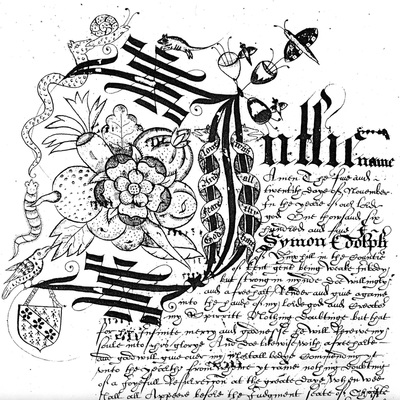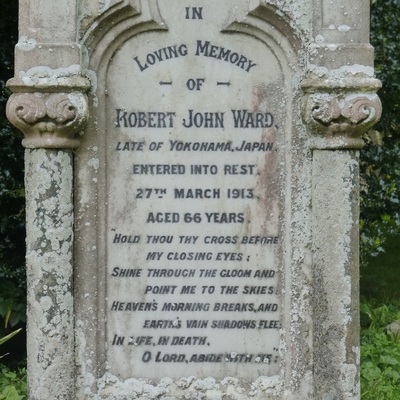Book Review |
Canterbury Cathedral Archives and Library. Newsletter 56, Spring 2017

In recent years there has been a transformation in the way family and local historians can obtain access to the records they require, with the availability of an increasing range of sources being provided online. Indeed, it is becoming clear that a substantial proportion of researchers extend their activities no further than their online efforts, thereby not only limiting their opportunities of successful research, but also curtailing their understanding of the world of archives – especially primary sources – which inevitably consigns their efforts to unnecessarily premature disappointment and frustration.
So, far from questioning whether a guide such as this is still relevant or necessary in a rapidly changing field, it seems clear that this offering is not only a vital addition to the assistance available for research on Kentish families, but very timely indeed. The publication is not only “bang up to date” but – lest it should be considered vulnerable to becoming immediately out of date with the launch of the next tranche of online records – it reminds us that many sources are not available online and re-emphasises a number of established principles of research, easily overlooked these days or even entirely unknown to those who have come to the hobby via their computer, and who may remain unaware of the value of guides such as this.
In the author’s Introduction and in his chapters on Preliminaries and Principle Basic Sources, the reader will pick up much that he or she may have thought they already knew - but didn’t! Among these sections is a clear explanation, for example, of the vital topic that so many family historians find daunting – that of wills and probate. Sources often overlooked by those reluctant to leave their computers are well covered by this guide, such as borough records and the fascinating church court records, and of course the extensive material to be discovered in our “parish chests” (so often overlooked by researchers) all of which are readily accessible at the Kent History & Library Centre and at Canterbury Cathedral Archives.
Many other local sources described include newspapers and directories. The Victorian poor law system produced a plethora of records which are available to us – workhouses and asylums for example, but much more – which have very good survival rates and, again, are accessible locally. Maps can be vital to our research and are described clearly here, as are sources such as the land tax, assize courts, quarter and petty sessions and archives produced by schools and the education system.
Even the most experienced family historian will find material and explanations he/she will have overlooked, but the limits of space prevent here the description of every source or every suggestion made by Dr Wright, whose previous specialist guides on Kentish research have already pointed many readers in the right direction for some years now. His clear maps and his careful choice of photographs and facsimiles of documents located in our Kentish archive and library collections enhance the way in which the material and his explanations are arranged.
It was high time a publication such as this appeared and it seems certain that a new generation of readers will benefit from the author’s long experience in the field of genealogical and local history research.
So, far from questioning whether a guide such as this is still relevant or necessary in a rapidly changing field, it seems clear that this offering is not only a vital addition to the assistance available for research on Kentish families, but very timely indeed. The publication is not only “bang up to date” but – lest it should be considered vulnerable to becoming immediately out of date with the launch of the next tranche of online records – it reminds us that many sources are not available online and re-emphasises a number of established principles of research, easily overlooked these days or even entirely unknown to those who have come to the hobby via their computer, and who may remain unaware of the value of guides such as this.
In the author’s Introduction and in his chapters on Preliminaries and Principle Basic Sources, the reader will pick up much that he or she may have thought they already knew - but didn’t! Among these sections is a clear explanation, for example, of the vital topic that so many family historians find daunting – that of wills and probate. Sources often overlooked by those reluctant to leave their computers are well covered by this guide, such as borough records and the fascinating church court records, and of course the extensive material to be discovered in our “parish chests” (so often overlooked by researchers) all of which are readily accessible at the Kent History & Library Centre and at Canterbury Cathedral Archives.
Many other local sources described include newspapers and directories. The Victorian poor law system produced a plethora of records which are available to us – workhouses and asylums for example, but much more – which have very good survival rates and, again, are accessible locally. Maps can be vital to our research and are described clearly here, as are sources such as the land tax, assize courts, quarter and petty sessions and archives produced by schools and the education system.
Even the most experienced family historian will find material and explanations he/she will have overlooked, but the limits of space prevent here the description of every source or every suggestion made by Dr Wright, whose previous specialist guides on Kentish research have already pointed many readers in the right direction for some years now. His clear maps and his careful choice of photographs and facsimiles of documents located in our Kentish archive and library collections enhance the way in which the material and his explanations are arranged.
It was high time a publication such as this appeared and it seems certain that a new generation of readers will benefit from the author’s long experience in the field of genealogical and local history research.
Peter Ewart






